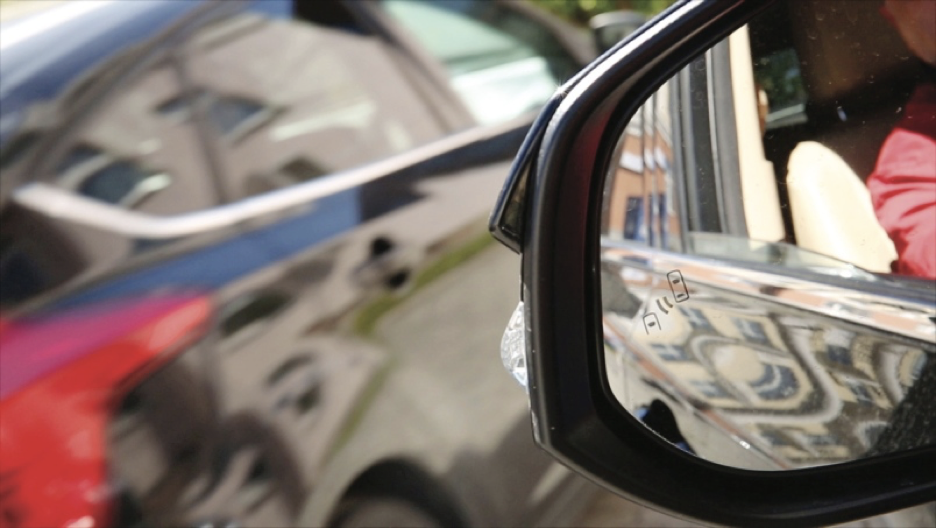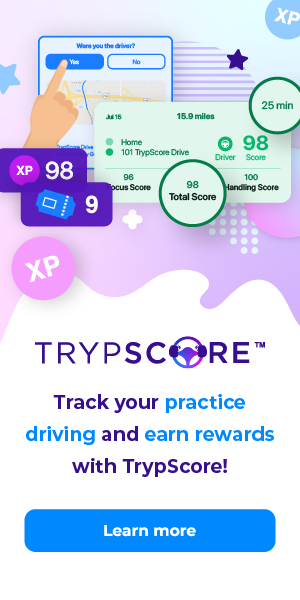Shoulder check a must in driving tests

New technology will override driver control and prevent a probable crash in confined and not-so-close areas. Lateral hazards are sometimes identified by a light on the side view mirrors, which alerts the driver to their whereabouts.
Photograph By DREAMSTIME, TNS
Giving others the cold shoulder can result in a predictable side-impact crash. The shoulder check, prior to a lateral traffic direction move, is the safest way to make lane changes, turns, or when driving in parking areas. Many drivers have been surprised by a vehicle caught in their blind spot, the area about 45 degrees behind each driver’s shoulder.
There is a way of setting up the vehicle mirrors to eliminate most of this blind area.
Allowing the rearview mirror to be set up to get the broadest view out the back window is the best way to help reduce and sometimes cover the shoulder check space. Despite all the placement of the mirrors to the advantage of the driver, and the 180-degree camera option, driving examiners still demand a shoulder check in the direction of travel on any standard driving test. Newer vehicles come with a complete camera view of 180 degrees behind the driver. This is probably one of the simplest ways to prevent side impact crashes in which both drivers are going in the same direction.
New technology will override driver control and prevent a probable crash in confined and not so close areas. Lateral hazards are sometimes identified by a light on the side view mirrors, which alerts the driver to their whereabouts.
Most drivers do not have the latest onboard technology and could be at a disadvantage when identifying unseen hazards. The most dangerous situations arise when drivers encounter the silent hazards.
Pedestrians and cyclists can slip silently into any driver’s blind spot. It is the driver’s responsibility to see them. The potential for disaster is always present when drivers make turns at intersections. It does not matter whether the pedestrian is running or the bike rider is silently passing on the right, it is a drivers responsibility to not only see them, but also react in such a fashion as to avoid a crash. The same responsibility rests with cyclists and pedestrians intending to make lateral moves. Hand signals are a good way to communicate with drivers.
It is a natural human behaviour to be concerned with one’s own safety and security. Drivers tend to first pay attention to what will hurt or kill them. The safety of others is not always, but more often, a secondary psychological consideration. Self-preservation trumps community safety. For this and other reasons of clear visibility, all forms of alternate travel are vulnerable when drivers do not check their blind spot before making lateral moves or when turning.
Truckers and bus drivers have an extensive collection of mirrors on each side of their vehicles. Many eliminate the front engine blind spot by having a forward extension mirror, which identifies any possible movement below the hood and in front of the bumper of the vehicle.
Still waiting!
Last week’s column got several people motivated to call their MLA. The number of road tests cancelled because of the coronavirus is staggering, about 60,000 provincewide, and perhaps 10 per cent of the total on Vancouver Island.
This has people concerned about how the backlog will be addressed.
Students leaving the province for post-secondary education and adults needing to get a licence for employment purposes are all wondering why there is no news coming from our government as to the resumption of practical class 5 and 7 testing.
Do those with tests cancelled in March and April get that priority? Will there be a chronological restart?
People were permitted to book road tests 100 days in advance. This 100 day, since mid-March has now elapsed, with no word about a plan to proceed.
This is the situation at the time of writing.
Fairness will hopefully be the key consideration when road tests resume.
Safety first, service to follow, should be the credo.
Steve Wallace is the owner of Joan Wallace Driving School on Vancouver Island. He is a former vice-president of the Driving Schools Association of the Americas, a registered B.C. teacher and a University of Manitoba graduate.


